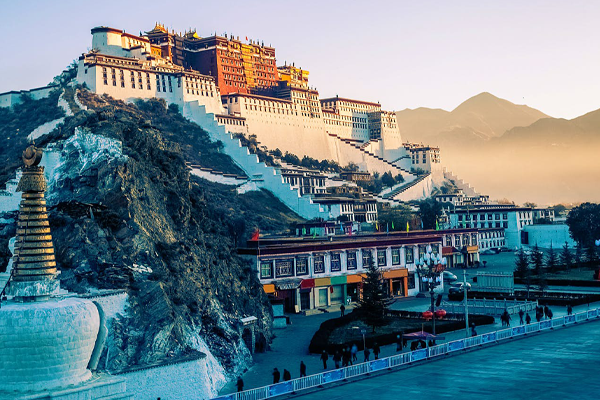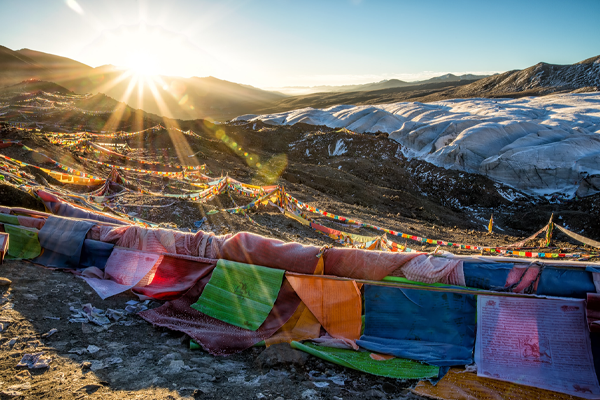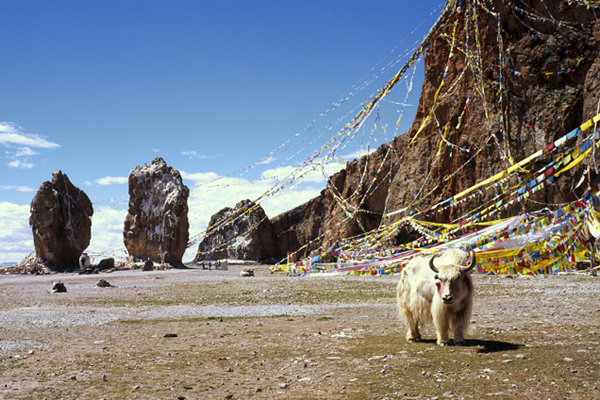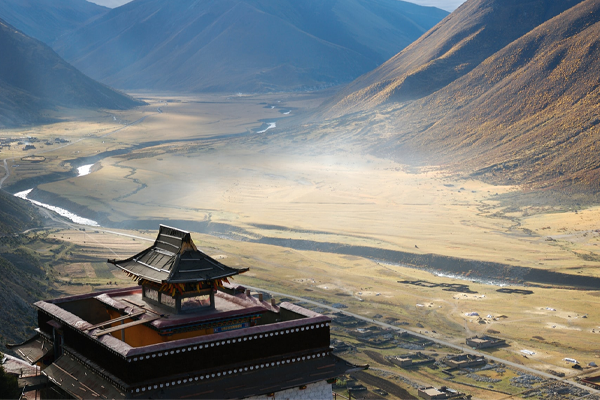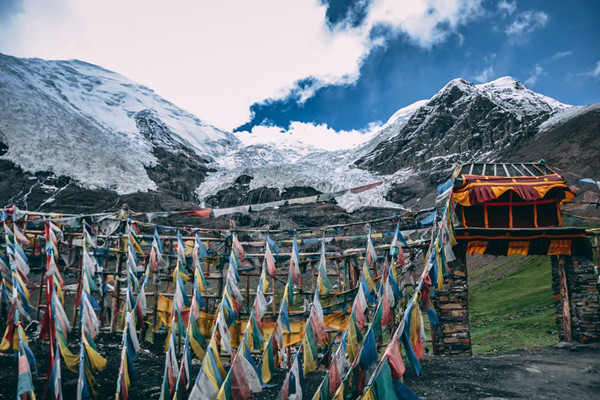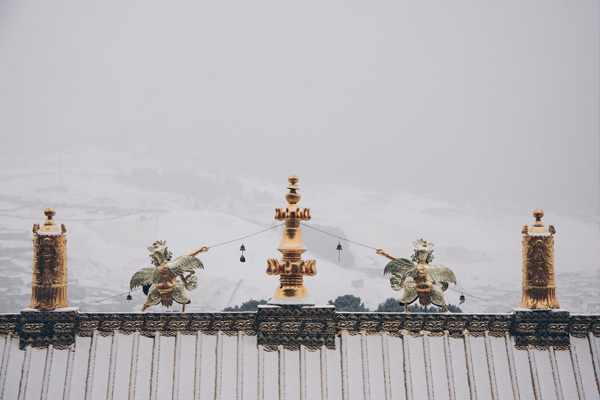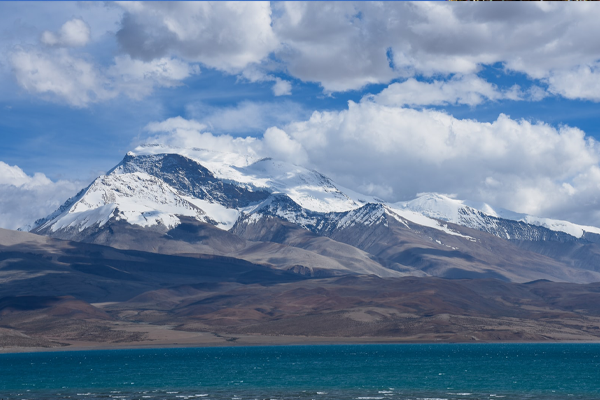11D Qinghai-Tibet Railway Experience
Tibet, also known as the “roof of the world” is the second biggest province in China. It offers rich landscape and religious heritage of Tibet making it an attractive destination for many.
Key Features:
- Potala Palace: Explore the 7th-century architectural marvel, the Potala Palace, the Highest Palace in the world, standing atop Red Hill at over 3,700 meters above sea level.
- Jokhang Temple: Visit the oldest and holiest architecture in Lhasa with a history of 1,400 years, Jokhang Temple.
- Drepung Monastery: Discover one of the largest Tibetan monasteries, Drepung Monastery, nestled at the foot of the Gambo Utse Mountain.
- Norbulingka: Experience the park that reflects the ethnic and religious features of the Tibetan people, Norbulingka.
- Yamdrok Lake: Marvel at the turquoise waters of Yamdrok Lake, one of the three holy lakes of Tibet, from the Kampala Pass.
- Tashilunpo Monastery: Visit the final resting place of Panchen Lama and one of the 6 major monasteries for Tibetan Yellow Sect.
Accommodations:
- All 5-star hotels throughout
Experience the Qinghai-Tibet Railway with a soft sleeper in a 4-berth train cabin from Qinghai to Tibet Autonomous Region.
Detailed Itinerary
Day 1: SINGAPORE – XINING (No meals)
Departure from Singapore Changi Airport for your flight to Xining via Beijing, formerly known as the “South Railway for Silk Road”. Upon arrival, meet by a local guide and check into the hotel to rest for the night.
Stay: Wanda Realm Xining or similar
Day 2: XINING - QINGHAI TIBET RAILWAY (Breakfast)
This morning after breakfast, transfer to Xining train station to board the Qinghai-Tibet train. Extending 1,956 kilometers on the Qinghai-Tibet Plateau, the Qinghai-Tibet Railway connects Xining, capital of Qinghai Province, and Lhasa, capital of Tibet.
You will travel on the highest altitude railway in the world, with its highest point at 4,000 meters above sea level heading towards Lhasa. All meals onboard the train will be at your own expense.
Witness the snow-capped Kunlun Mountains as the train climbs up a steep mountain pass, trudging toward Lhasa. Through the window, view grasslands dotted with black yaks and prayer flags fluttering from gold-topped temples.
Note: Due to the current operational procedures onboard the Qinghai-Tibetan Railway, we will do our utmost to arrange for all passengers to be accommodated in the same cabin. Rooming-in the berths will be arranged according to the traveling party’s size and age.
Day 3: QINGHAI TIBET RAILWAY – LHASA (Dinner)
Continue your journey towards Lhasa, passing through Xining, Ge’ermu, Tuotuo River, Anduo, Naqu, Dangxiong, and finally Lhasa. All meals onboard the train will be at your own expense.
Today, you will witness the most beautiful scenery of Qinghai-Tibet Railway, including the boundless Qiangtang Prairie, the desolate, golden Gobi Desert, and the wildlife-rich Kekexili Nature Reserve.
Arrive in Lhasa, Tibet in the evening. Lhasa is the capital of the mystical Buddhist Kingdom of Tibet. Head for dinner before transferring to your accommodation for the night. Do take ample rest in order to acclimatize to the high altitude.
Stay: Shangri-la hotel or similar
Day 4: LHASA (Breakfast)
This morning, your journey starts from the religious Potala Palace built in the 7th century by the famous Tibetan king-Songtzen Gampo. The Potala Palace currently holds the record of the Highest Palace in the world.
After, visit Jokhang Temple, situated in the old section of Lhasa. Jokhang Temple is the oldest and holiest architecture in Lhasa with a long history of 1,400 years.
Visit Barkhor Street, an ancient round street surrounding the Jokhang Temple. Then head for dinner, before returning to your hotel.
Stay: Shangri-la hotel or similar
Day 5: LHASA (Breakfast)
Today, first, you will visit Drepung Monastery, one of the largest Tibetan monasteries. Then, visit Norbulingka Park.
Stay: Shangri-la hotel or similar
Day 6: LHASA – GYANTSE – SHIGATSE (Breakfast)
Today, take a drive up to the Kampala Pass (4797 meters) where you’ll have a glimpse of Yamdrok Lake down below as well as spectacular views of the holy Mount Nyenchen Khangsar in the distance. Get your camera ready for the turquoise waters of Yamdrok Lake, one of the three holy lakes of Tibet, and the beautiful Mt. Nyenchen Khangsar glacier as seen from the Karola Pass.
Later, visit the Karola Glacier before continuing to Gyantse, where you will be able to see the famous Gyantse Kumbum, one of the most stunning architectural wonders in Tibet.
Continue your journey to Shigatse, where you will spend the night. Check into your accommodation and rest for the night.
Stay: Qomolangzong Hotel or similar
Day 7: SHIGATSE – LHASA (Breakfast)
After breakfast, proceed to visit the Tashilunpo Monastery, the final resting place of Panchen Lama and also one of the 6 major monasteries for Tibetan Yellow Sect. En-route, you will see the park of Oriental Miraculous Mastiff. Return to Lhasa and appreciate the art of Tibetan Thangka.
Note: If the park of Oriental Miraculous Mastiff is closed during winter, it will be replaced by Zongjiaolukang park or Ramoche Temple.
Stay: Shangri-la hotel or similar
Day 8: LHASA – NAMTSO LAKE – LHASA (Breakfast)
In the morning, head for Lake Namtso (Approx. 4 hours journey). Feel free to stop your driver and make a stop along the way to snap some picturesque pictures.
Namtso Lake, located in the northwest of Lhasa, is the highest saltwater lake in the world with an altitude of 4718 meters. It is also the second-largest saltwater lake in China. In Tibetan, Namtso means Heavenly Lake, making it one of the three holy lakes in Tibet, together with Yamdrok Lake and Lake Manasarovar.
Note: In the event that we are unable to visit Namtso Lake due to drastic weather condition, it will be replaced by Derpung Monastery and Past Dalai Lama’s treasured park - Norbulingka Palace.
Return to Lhasa.
Stay: Shangri-la hotel or similar
Day 9: LHASA (Breakfast)
After breakfast, make a visit to Mt Chokpori, also known as 'Iron Mountain', a sacred hill in the city of Lhasa in Tibet. Next, visit the Zaki Temple. Before dinner, visit the Tibet Museum.
Stay: Shangri-la hotel or similar
Day 10: LHASA – CHENGDU (Breakfast)
After breakfast, transfer to the airport. Take a flight to Chengdu. Once arrival in Chengdu, take your leisure at the hotel.
Stay: Joyhub Air Hotel or similar
Day 11: CHENGDU – SINGAPORE (Breakfast)
After breakfast, enjoy your free time till the appointed time to transfer to the airport. Take an international flight back to Singapore.
Please note: This itinerary is designed to give you an idea of what to expect on the tour but is not set in stone. What we actually do on a given day is flexible and can be tailored based on the interests of the group.
This itinerary and its package inclusions might be changed later in time, subject to availability.
Remarks:
- Passengers with high blood pressure or heart health problems and elderly are advisable to consult doctor before joining tour.
- Diplomats and reporters will need special arrangement for the Tibet Entry Permit.
- No cancellation and amendment are allowed after full payment.
- Booking reservation is required minimum 3 working days to process and is subject to confirmation 1-3 days before the departure date.
- No combination with other tour agencies.
- The sightseeing in Tibet will subject to weather condition and may not meet your expectation.
- Tour is conducted in English unless otherwise specified.
- Itinerary may be subject to change due to circumstances beyond the Company’s control.
- Accommodation in designated cities is subject to room availability.
- Sequence of itinerary may be subject to change.
- Proposed changes, if any, that are not accepted will be subject to the refund provisions set out in the Terms and Conditions.
- All hotel ratings are based on local standards in China. Hotels with no-star ratings will be labelled as X-star hotels for reference.
- Potala Palace get a limitation 2800 paxes / day to protect the heritage of history. The sequence of sightseeing supposed to be adjusted according the situation of entrance permission.
Updated on 11 Jan 2024




